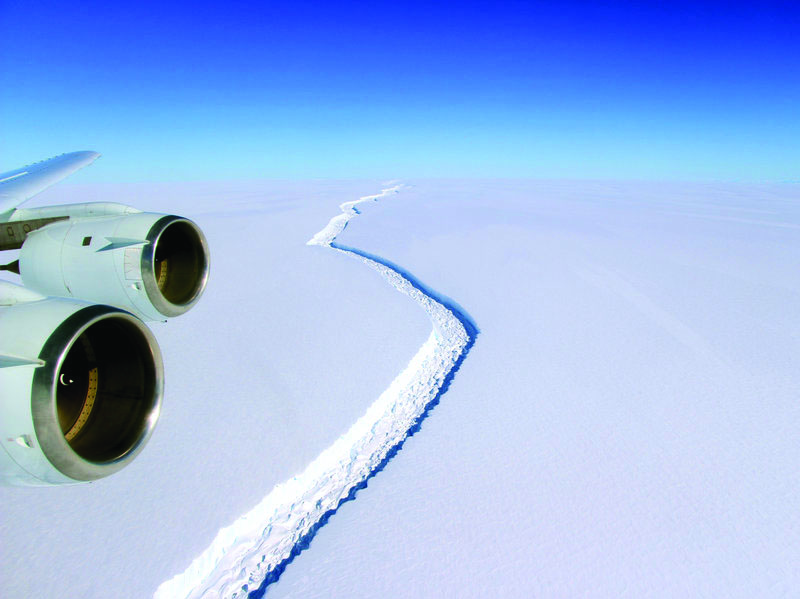Ice cap cracked in Antartica

overview of the recently cracked ice cap.
News Assistant
Over the course of 50 years, the ice caps in Antarctica and around the world have been slowly melting and breaking off, which affects Antarctica and all of the animals currently inhabiting it. As of June, an “iceberg the size of Delaware broke away from Antarctica,” says The New York Times. A crack more than 120 miles long had developed over several years in a floating ice shelf called Larsen C, and scientists who have been monitoring it confirmed July 12 that the huge iceberg had finally broken loose. The break “will fundamentally change the landscape of the Antarctic Peninsula,” according to Project MIDAS, a British Antarctic research project that’s tracking the crack.
On the Antarctic Peninsula, the warming of ice caps has been far greater—nearly five degrees per year on average. That’s why the Delaware-size iceberg just broke off and why smaller ice shelves on the peninsula have long since disintegrated entirely into the waters of the Weddell Sea. But around the Amundsen Sea, about 1,000 miles to the southwest on the Pacific coast of Antarctica, the glaciers are far larger and the stakes far higher. They affect the entire planet. The iceberg itself measures more than 2,300 square miles and is on average more than 600 feet thick.
“The iceberg is one of the largest recorded and its future progress is difficult to predict,” said Adrian Luckman in a statement for USA today. Luckman is a professor and lead investigator with Swansea University in Swansea Wales.
“It may remain in one piece but is more likely to break into fragments,” reported NBC News DATE “Some of the ice may remain in the area for decades, while parts of the iceberg may drift north into warmer waters.”
This occurrence is far greater than it seems. Global warming is extending past the ice caps and into the oceans.




